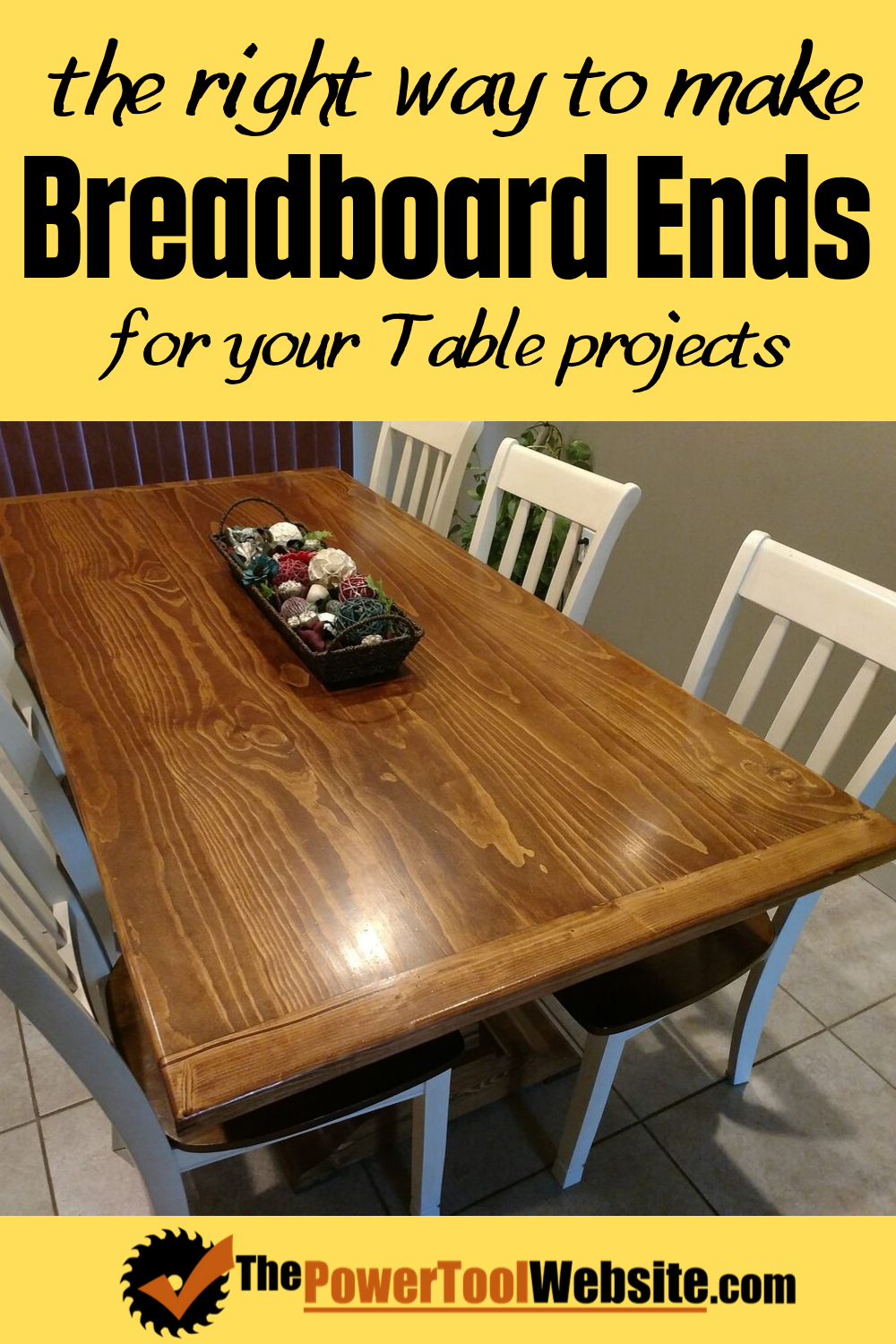So you’re thinking about building a table? You’ve heard about these “Breadboard Ends”. You’ve probably seen them. Maybe you’ve even tried them out.
I know a woodworker who didn’t know the correct way to create breadboard ends, and he ended up causing the table top to split. It wasn’t really his fault, he was simply never taught the proper technique.
Well that’s what inspired me to write this post. I’ve made my share of tables and several of them had breadboard ends. So I’ve got my methods figured out, and I want to share them with you here today.
What Are Breadboard Ends?
Breadboard ends are when you take a board and attach it to the end grain of a panel, perpendicular (90 degrees) to the boards in the panel itself.
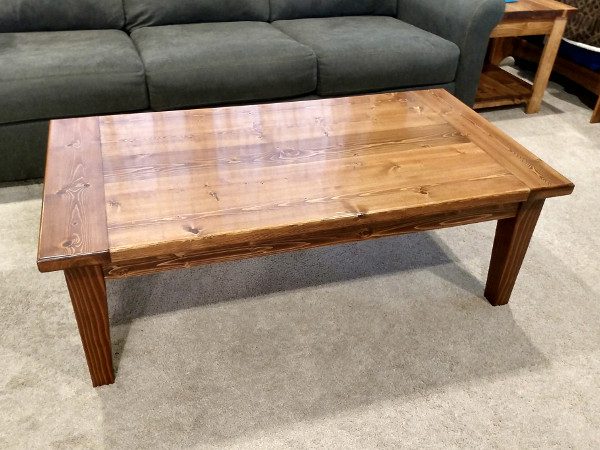

It’s a common and attractive way to build a table top for many types of tables, or even desks.
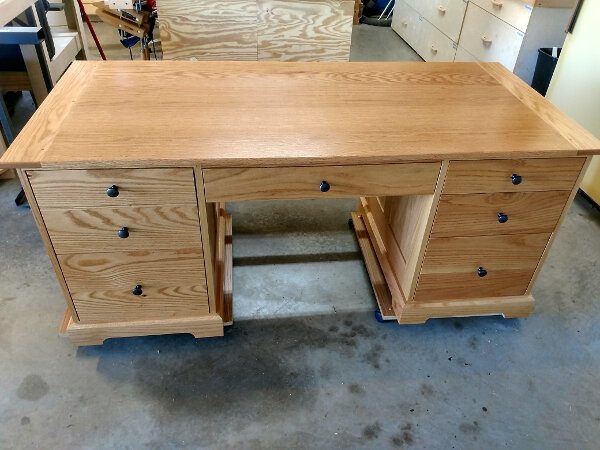

My coffee table up above has breadboard ends done with pocket joinery, which I’ll cover in a few minutes. And for my computer desk, I made mortise and tenon breadboard ends, which is the more “Proper”, traditional method.
Incorporating breadboard ends really makes the panel come together and look more “complete” in my opinion, compared to leaving it off.
Here’s one of my end tables that does not have breadboard ends. I made 2 of them, and while I still love these tables, they illustrates the difference in the overall look and feel.
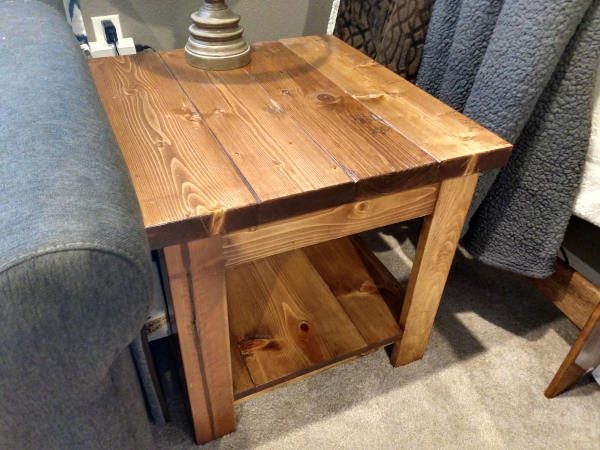

But anyway, the main purpose of the breadboard ends (as the Amish crafters explain it) is to allow for wood movement. As the solid wood panel in the middle expands and contracts, the breadboard ends (when done properly) will not hinder this movement.
Plus, it will help to keep the panel flat as it acclimates (adjusts to the environment) to its final home.
What Happens When You Glue A Breadboard End To The Table?
As we all know, wood absorbs moisture from the air around it, based on the environment’s humidity level.
What you may not realize is that this moisture absorption causes the wood to expand. And on the flipside, the loss of moisture (due to lower humidity levels) causes the wood to contract.
This process can wreak havoc on a finished project, if it wasn’t planned for properly.
When joining the breadboard end to your panel, you simply cannot use standard glue-joinery.
Here’s what happens if you do:
If the main panel in the middle contracts, it will likely split along one or more of the boards or panel-glue-joints to relieve the stress.
If the main panel expands, it will likely break or buckle in an unexpected way. It could try to warp to relieve the pressure of the expanding wood, and this could split the breadboard joint itself.
This will happen if you use dowel and glue joinery, simple edge gluing, edge gluing with biscuits, standard glued mortise and tenon, and anything else that glues the breadboards directly to the end grain of the panel boards.
The Proper Breadboard Ends Technique
I’ve made 3d diagrams to help illustrate the process, since at the time of writing this, I didn’t have any table projects going on.
The traditional and “Proper” ways to handle this is to either create a mortise and tenon joint, or a tongue and groove joint.
The tongue and groove will be easier for beginners, as it allows you to cut the groove on the table saw.
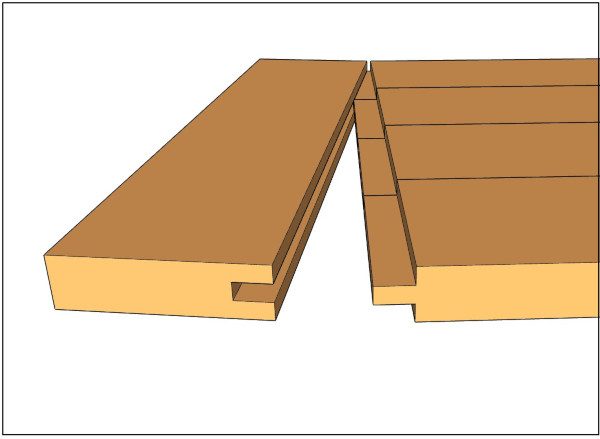

The mortise and tenon is mostly the same, but the tenon won’t be exposed on the ends. And so the mortise must be cut using a plunge router along the edge of the breadboards. This can be a tricky setup.
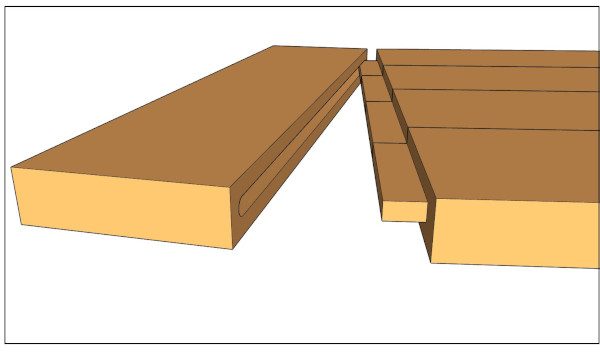

For the sake of this tutorial, I’ll be showing you the tongue and groove method.
First, you’ll cut rabbets on the top and bottom of the panel, creating the tongue. This should be at least 1” long, and will run the entire width of the panel.
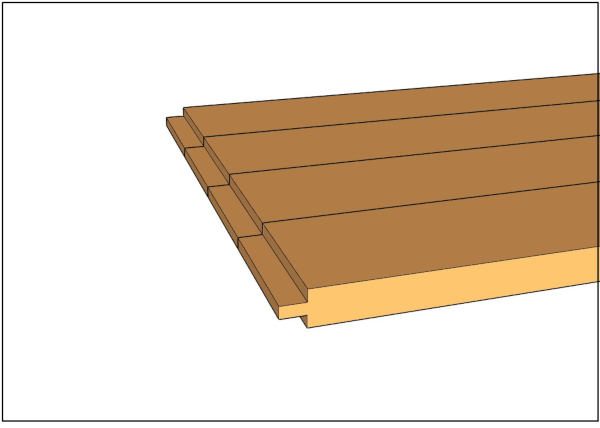

Use your hand held router and a straight edge guide to do this, or you can cut the rabbets on your table saw.
Now hold the breadboard against the tongue you just created, and mark out the thickness of the groove.
Cut the grooves in the breadboards on the table saw, sneaking up on the final fit. This needs to be SNUG.
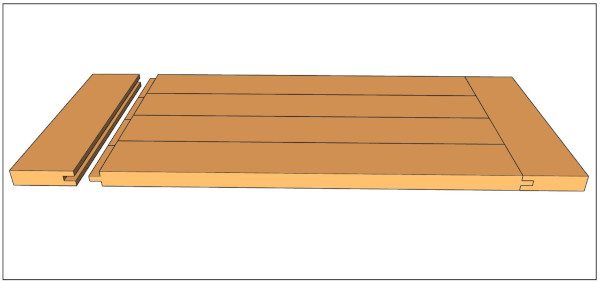

With the breadboard attached to the panel, pulled all the way in and tight against the shoulders of the tongue, drill 3 holes down through the breadboard (3/8″ is fine, I’ve even used 1/4″). One hole goes in the center, and one at each end, about 2 to 4 inches in from the edge.
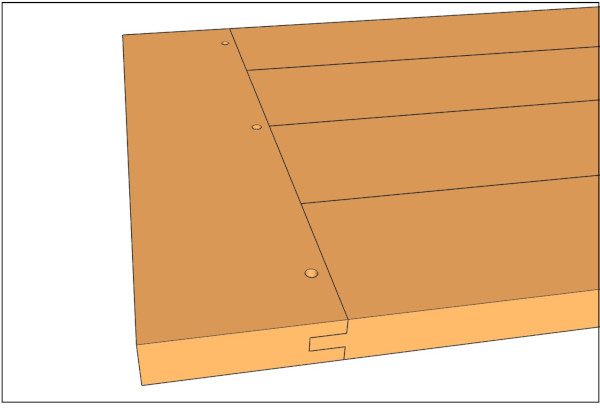

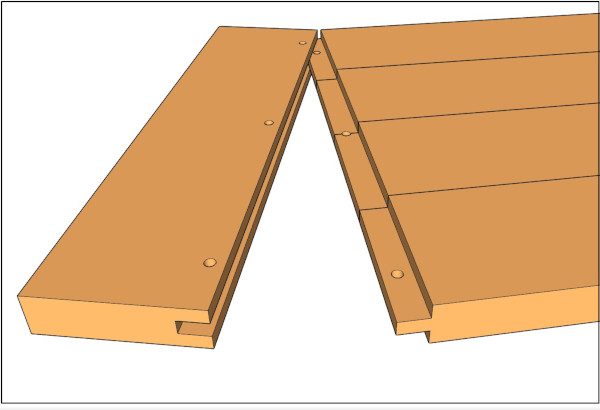

Now remove the breadboard, and using a round file or a jig saw, elongate the 2 outer holes (not the center hole), in the tongue.
(Do NOT elongate the holes in the breadboard)
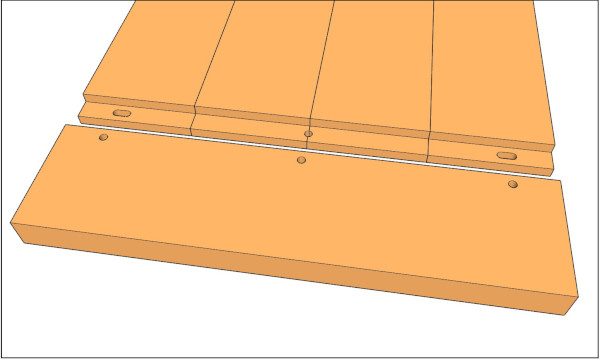

Just to make it clear on how to elongate the holes, here’s an slightly-transparent image of the pieces fitted together, which illustrates how the breadboard holes line up with the tongue holes.
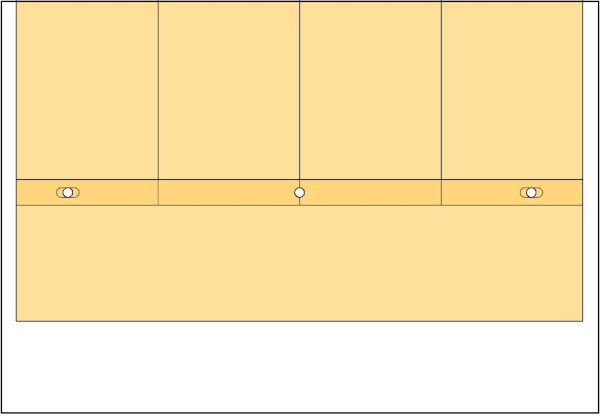

Now you can re-attach the breadboard end. Cut some dowel from a new piece of dowel stock, using the same diameter dowel as the holes you drilled.
Go ahead and apply glue to the center hole, and the center dowel, and insert it through the hole until it’s just past flush on the bottom. Let it dry before cutting and sanding down flat.
For the outer 2 holes, the process is a bit more involved.
To glue a dowel in an outer hole (one with an elongated tongue hole), you need to be careful to NOT glue the dowel to the TONGUE. Only glue it to the breadboard.
To accomplish this, first apply glue in the bottom (underneath) hole of the breadboard.
Now push in the dry dowel from the TOP of the breadboard. Once it’s through the tongue and approaching the bottom hole (the hole with glue in it), apply some glue directly on the dowel so the top section of the dowel will be glued to the top hole of the breadboard end as you push it in the rest of the way.
So push the dowel down through until it’s just barely past flush with the bottom of the breadboard end.
If done correctly, you will have a dowel glued to the breadboard, while the center of the dowel, and the tongue, did not get any glue.
Here’s a cut-away diagram showing this detail (click to enlarge)
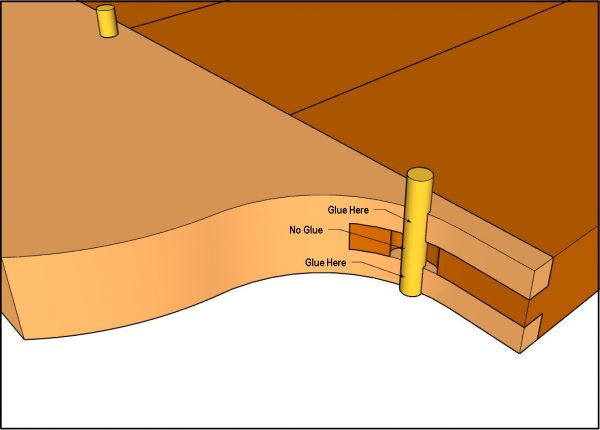

Let the glue dry before cutting flush and sanding the dowels down flat.
Final note to remember:
The center dowel is glued all the way through. This means it will be stationary and will keep the breadboard centered on the panel.
The outer 2 dowels will allow the panel within to expand and contract, while still holding the breadboard tight against the panel.
Why Using Pocket Hole Joinery For Breadboard Ends Works Fine
WARNING: Controversial Material Ahead… Seriously, this goes against the grain (pardon the pun) of what most woodworkers teach.
Pocket hole joinery works fine for breadboard ends (in my own personal experience). And I live in the midwest where humidity is really high in the summer, and pretty low in the winter.
Plus, I’ve done this using dimensional pine boards from the lumber yard, which are notorious for having really high moisture content from the store, meaning a lot of contraction after they dry when you bring the project inside.
On my coffee table I did a simple edge to end pocket screw joint, meaning I did not cut a tongue and groove.
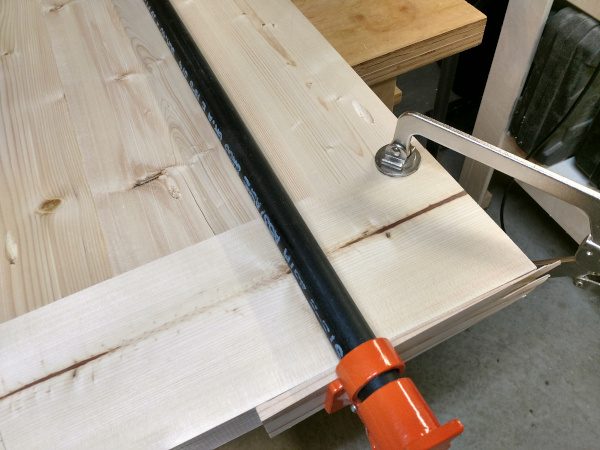

I attached the breadboard end tightly with pocket screws, without any glue whatsoever.
At the time of construction, the ends of the breadboards were perfectly in line with the edges of the inner panel.
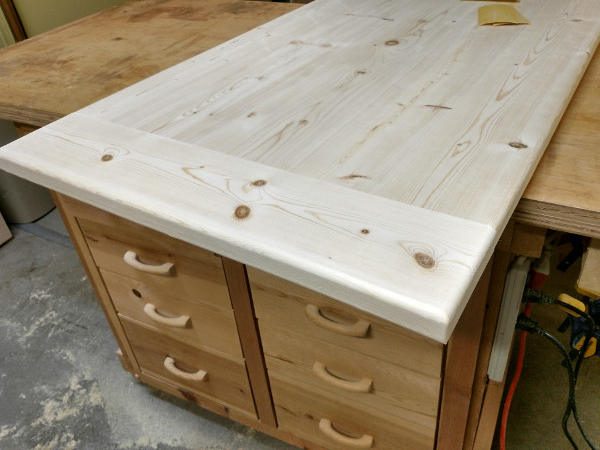

Once I brought it inside, after a few months, I noticed there had been contraction.
The inner panel has shrunk down and is about 3/32″ in from the end of the breadboard on each side, as you can see below.
This is normal. In fact, it’s what you want with breadboard ends. It means it’s doing its job, and the panel is allowed room to expand/contract.
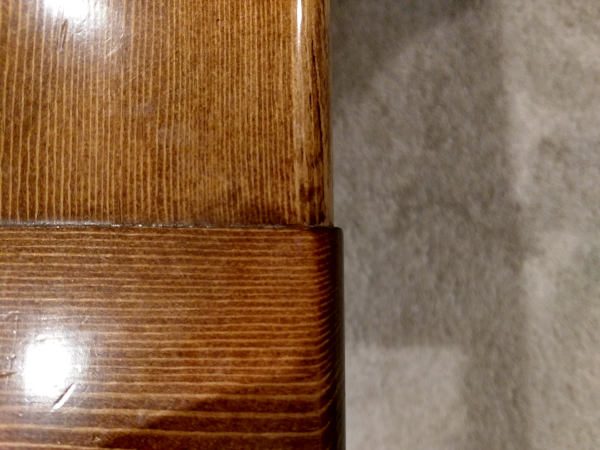

But this goes to show, there is enough wiggle room in pocket hole joinery to allow for this contraction, without stressing the panel so much it splits.
And so I’ll leave you with this…
If you’re ready and equipped to take on “proper breadboard ends”, then by all means give it shot.
But if you’re not ready, and you want to make a simple beginner-friendly table, without worrying about the panel splitting, then go ahead with the pocket hole method.
Be sure to sign up below for tips and projects like this one sent straight to your inbox. Plus I’ll keep you updated on all future blog posts.
Related:
How to Do Pocket Hole Joinery
12 Tips For Making Flatter Panel Glue Ups
The Best Glues For Wood Projects
Kreg Pocket Hole Jig 320 Review
